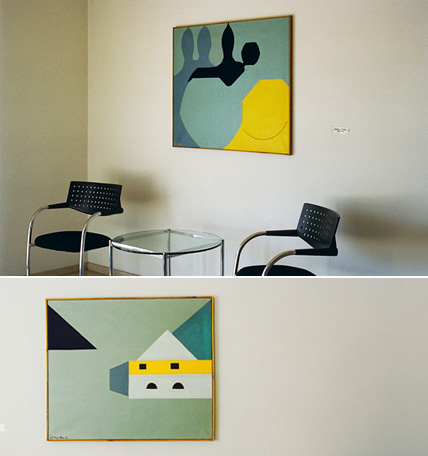| DE / EN |
||||
 Rudolf Urech-Seon Composition P, 1954 – Orient, 1958 Photograph: Katalin Deér, 2011, Verwaltungsgebäude |
 [...] Over the centuries, not only have artists’ methods, materials, and motifs changed, to say nothing of their clients and the function of the works they produce, but artists have set new goals for themselves, and they have led their audiences to develop new expectations of art. This explains why a work can be described as new even when it “merely” revisits a particular mode of representation – which is what contemporary art often does – with the result that the work is not actually “new” at all, at least not in terms of technique or craftsmanship. Traditional forms and techniques can also be harnessed to the pursuit of completely different goals. After all, the intention underlying a work is just as much a part of it as its objective existence. So when we ask whether an artist is in tune with the times, we should not confine our comparison to mode of representation – the handling of form, in other words – alone; we should rather inquire into what the artist actually intended with his or her work. As artistic intentions have not remained constant, works from different periods can be compared only up to a point. And as goals change, so historical works can be viewed in a new light. Historical works can be viewed in a new light |
Art from SwitzerlandHomeNews – November 2020 – March 2020 – October 2019 – March 2018 – October 2017 – April 2017 – January 2017 – May 2016 – December 2015 – May 2015 – March 2015 – December 2014 – August 2014 – May 2014 – October 2013 – April 2013 – July 2012 – March 2012 – November 2011 – May 2011 – January 2011 |